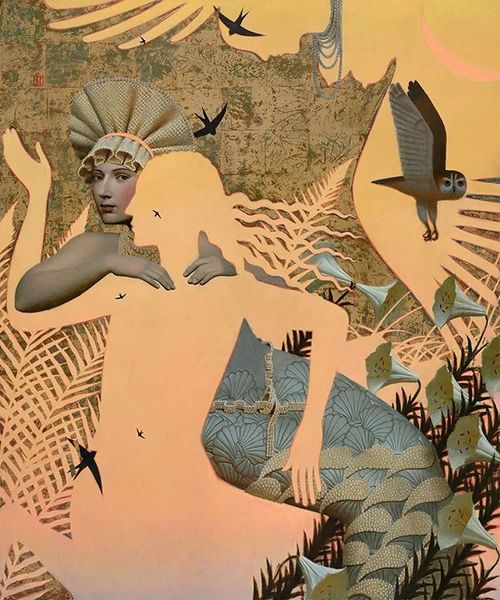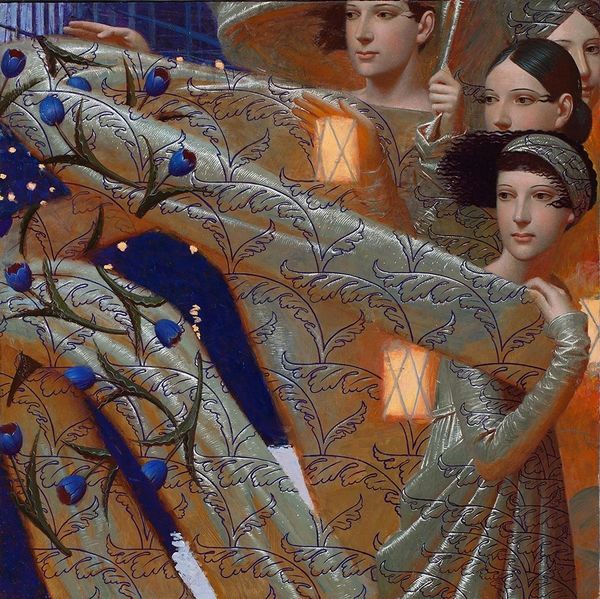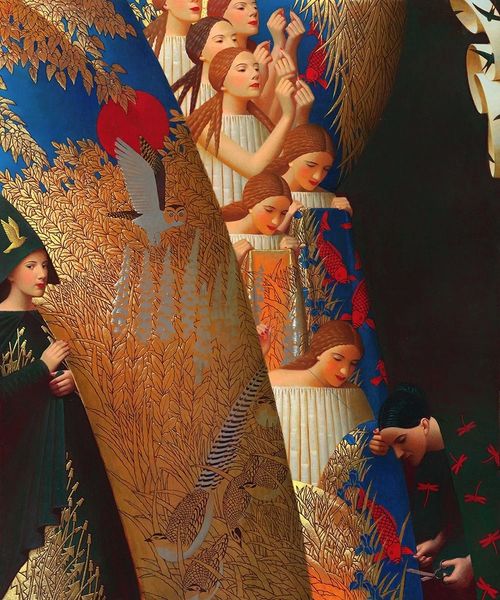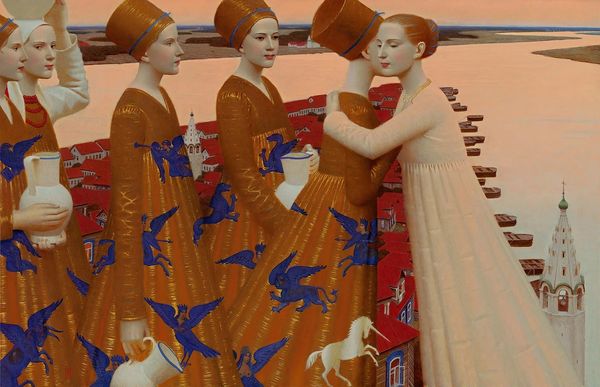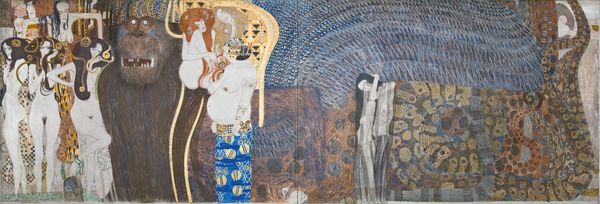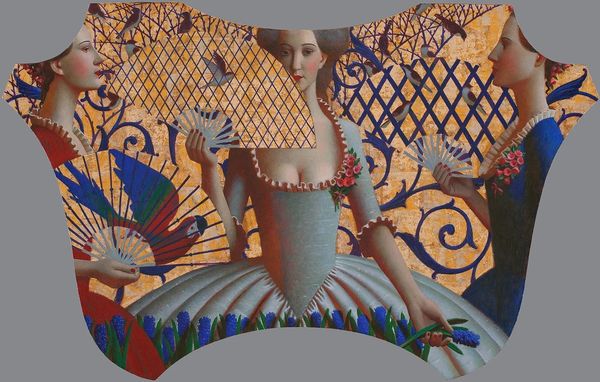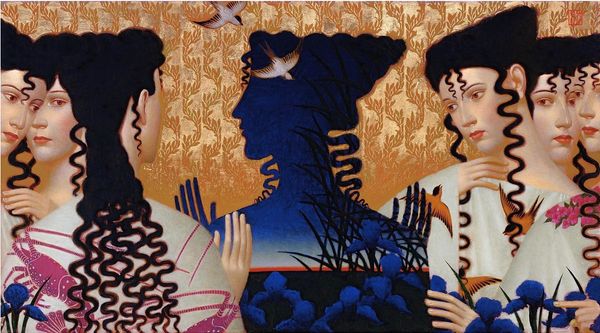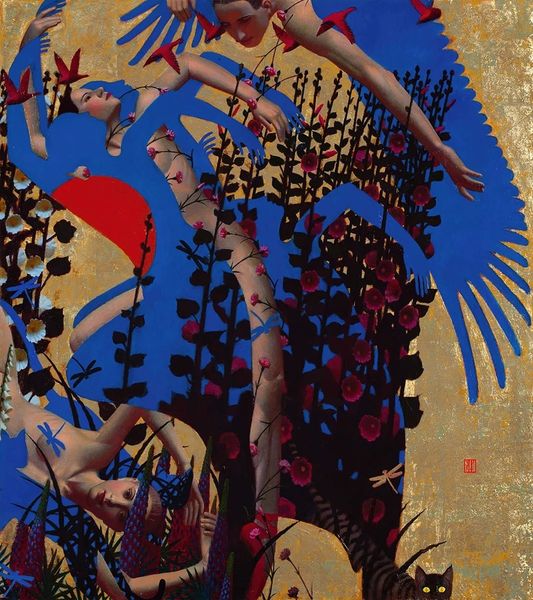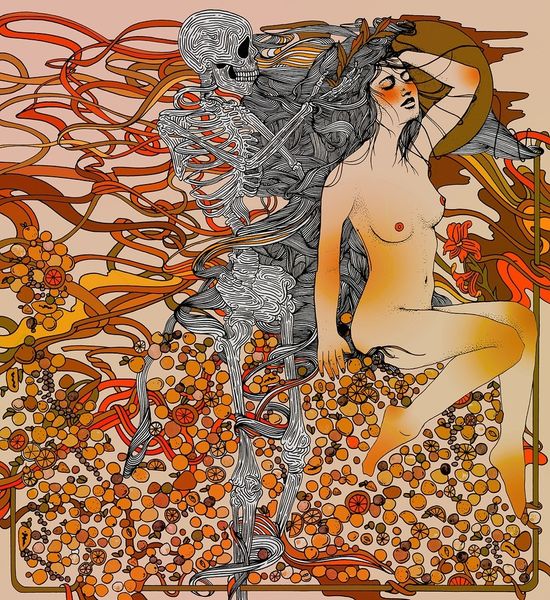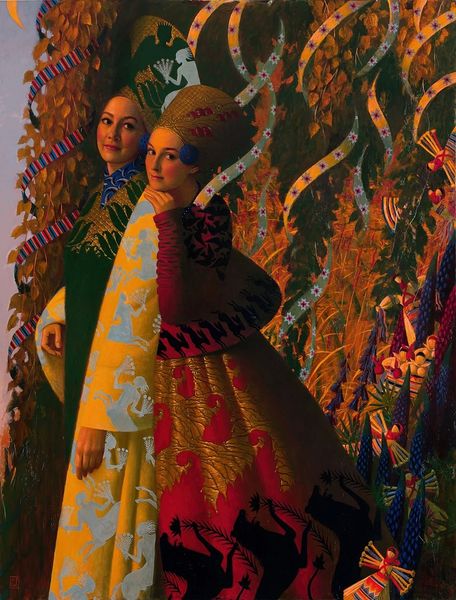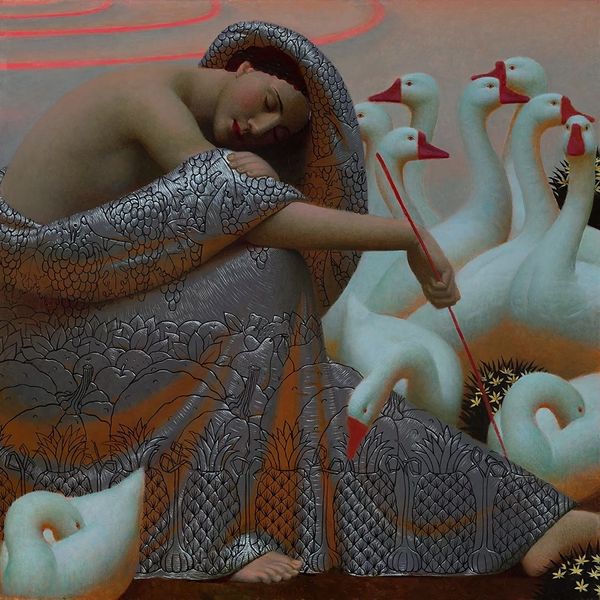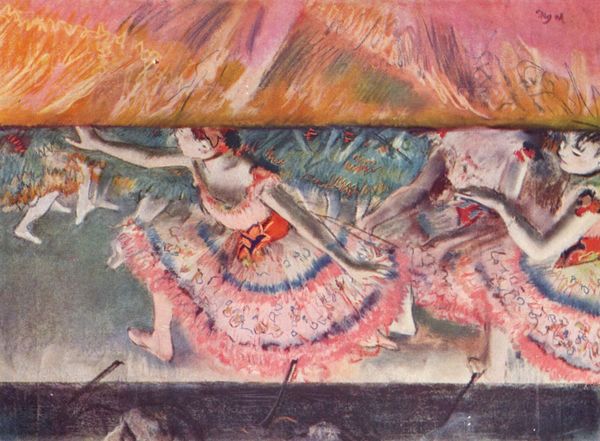
Copyright: Modern Artists: Artvee
Curator: Andrey Remnev created "Dunas, third part" in 2009, employing oil paint to achieve this enigmatic composition. Editor: My first impression is one of muted magic. There's an otherworldly quality to the scene, with a delicate balance between realism and the surreal. Curator: It's fascinating how Remnev combines seemingly disparate elements – the realistic portrayal of the woman with the stylized pattern of the fabric and the almost symbolic gathering of birds. The oil paint application also gives it this sheen, that makes it appealing to touch, were it possible. Editor: Absolutely, and it makes you wonder about the role of women. How can this depiction be interpreted within the tradition of female figures in art history, specifically concerning female labor and class? She almost seems trapped within this ornamental world, passively holding an energy between her hands while surrounded by symbols of possible freedom. Curator: I wonder about the patterned fabrics. The detailed rendering suggests careful selection. What’s the purpose? Do you feel Remnev is trying to create this dichotomy between organic form, with the woman, and the fabricated material she's enveloped in? Editor: I do. Also, looking closer, the uniformity of those birds also adds another layer. They’re almost like a manufactured audience and that brings into focus discussions around autonomy and conformity within the broader societal discourse. And doesn't the luminosity from whatever she's holding hint at hope for future emancipation from the structures she's in? Curator: Well, that light definitely complicates matters. It introduces an element of, maybe, utopian idealism. It could serve as a focal point, redirecting viewers attention towards a belief that new production methods could, perhaps, lead to this re-imagined reality. Editor: I like your reading. It makes me rethink about the potential and constraints of labor... A pertinent subject that’s relevant not only back then, but right now as well. Curator: Indeed, viewing art as a historical artifact opens up this sort of dialogue about labor processes and even resource allocation... "Dunas, third part" then becomes a reflection on the choices made throughout the construction of its material reality. Editor: And so, "Dunas, third part" invites reflection on its artistic expression but simultaneously creates pathways for critical discourse and self-awareness around our history and reality.
Comments
No comments
Be the first to comment and join the conversation on the ultimate creative platform.
